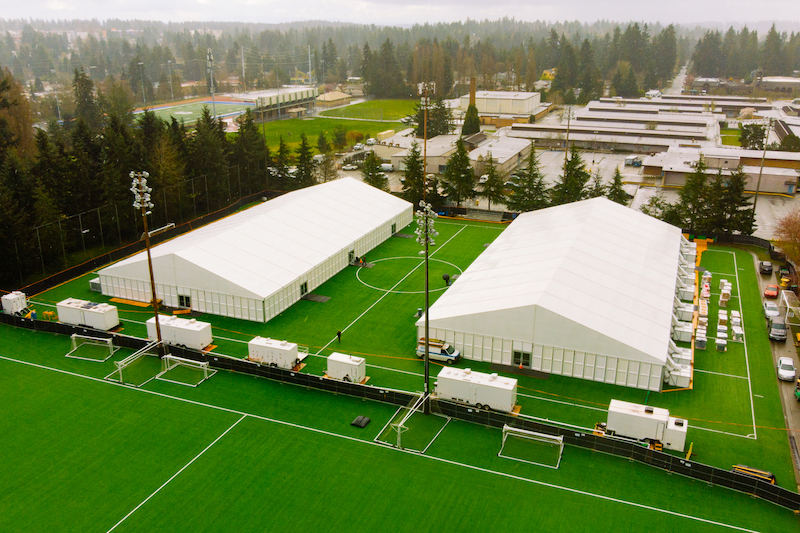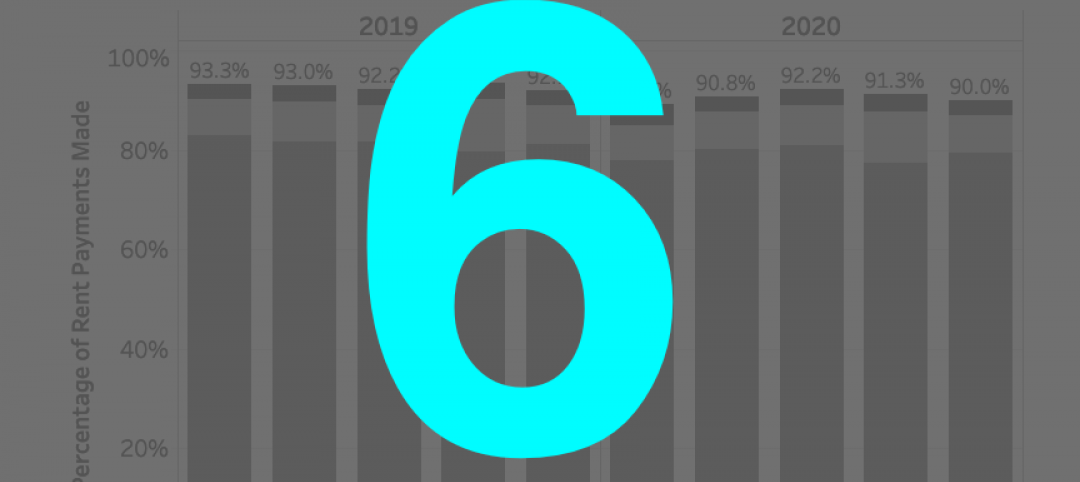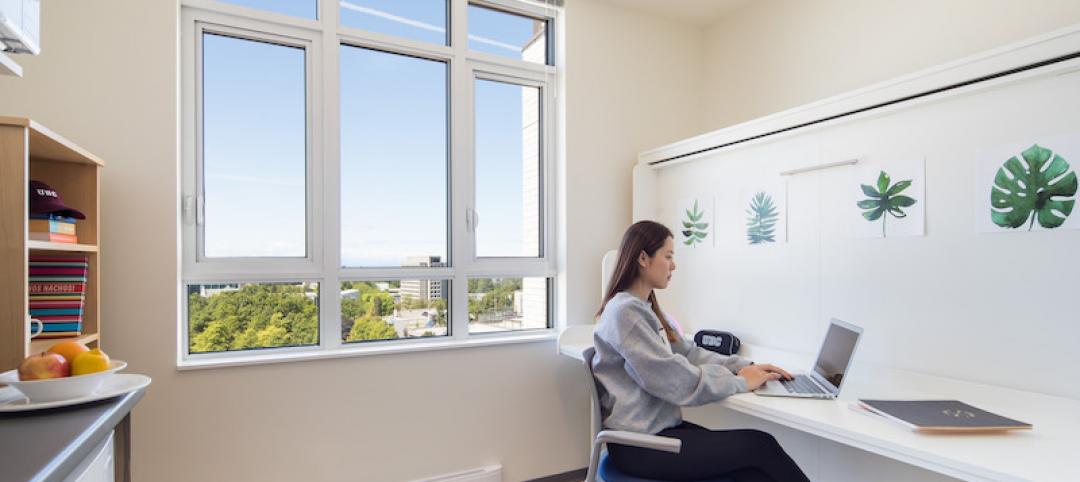About 18 months ago, officials from King County, Wash., which includes Seattle, approached DLR Group about developing housing solutions for the county’s homeless, who by one recent count totaled nearly 11,200, with just under half of those homeless unsheltered by conventional human habitude.
DLR Group, a national architecture and engineering firm, had been working on this project for a year when, on January 20, the first case of the coronavirus in the U.S. was reported in the state of Washington. As of April 4, Washington State’s Department of Health estimated that of the state’s 7,591 cases of illness and 310 fatalities attributed to COVID-19 infection, 2,898 cases and 200 deaths were in King County.
As part of its efforts to stem the virus’ spread, King County and DLR Group entered into an emergency contract. Working with the county and the builder Howard S. Wright (a division of Balfour Beatty), DLR Group developed a rapid-response solution to transform multiple sites into facilities equipped to quarantine patients who are incapable of self-quarantine, including the homeless.
The goal is to add 2,500 beds across 12 sites that range from converted motels and warehouses, to temporary structures built on parking lots and sports fields. As of this week, 800 beds will be online in four to six facilities, says Lori Coppenrath, DLR Group’s Justice and Civic Planner, who is spearheading this effort for her firm. She spoke with BD+C last Thursday.
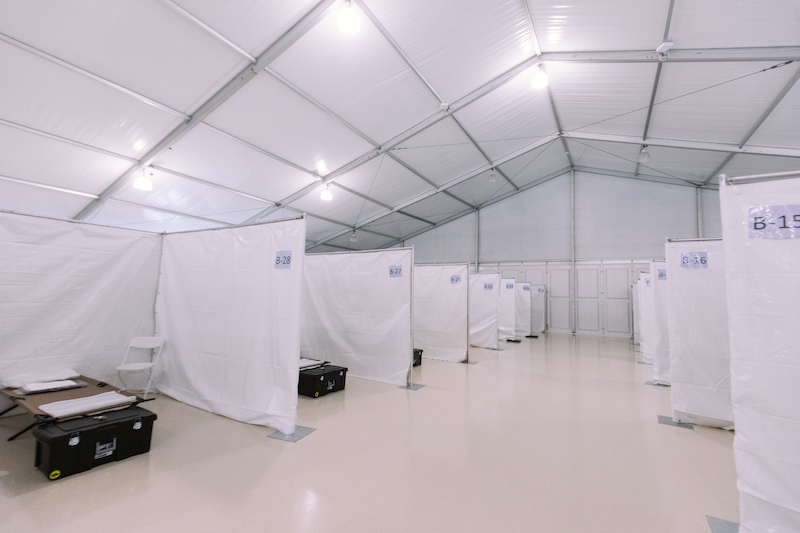
Some of the temporary structures are huge tents, inside of which are barracks-like beds.
One of the county’s goals is to move people out of hospitals who aren’t critical but still need a safe, monitored environment to recover fully. Each of these Assessment and Recovery Centers is typically conceived, studied, built, and permitted within two weeks, to get patients into them quickly.
Testing for the virus is actually done offsite, says Coppenrath, to avoid infecting anyone in a Center who is not currently sick or has tested negative to COVID-19. In developing the concept for the Centers, the building team and county devised flow diagrams for how patients and staff would move through the Centers. Those diagrams incorporate transportation needs with defined drop-off/pick-up areas, parking, and emergency and fire accessibility.
Coppenrath says this project has been an exercise in overcoming barriers. “These Centers are like field hospitals, so you have to figure out how to offer basic services to people who might be there a month or longer.” The design includes storage that minimizes the potential for contamination from other patients’ property. The Centers also need to provide areas where people can wash their hands frequently and shower. The facilities must be ADA-accessible.
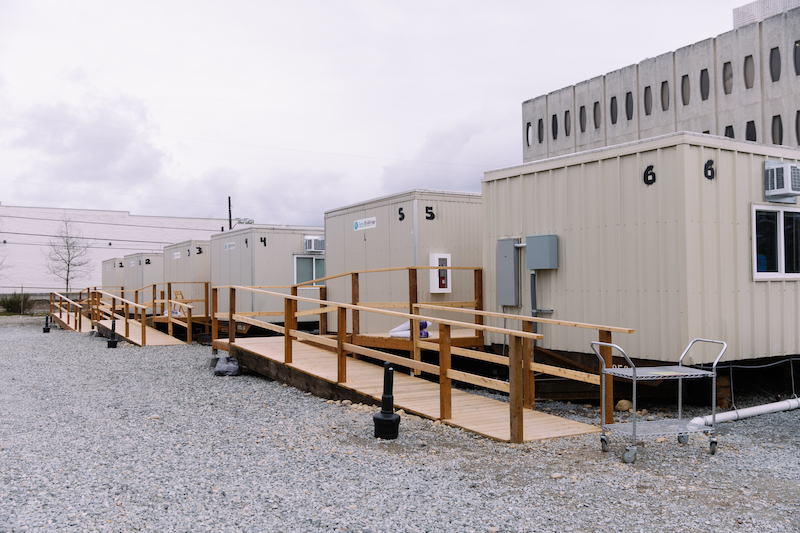
Some of the Assessment & Recovery Centers are ADA-compliant trailers, with individual living quarters that include kitchens, baths, and closet space.
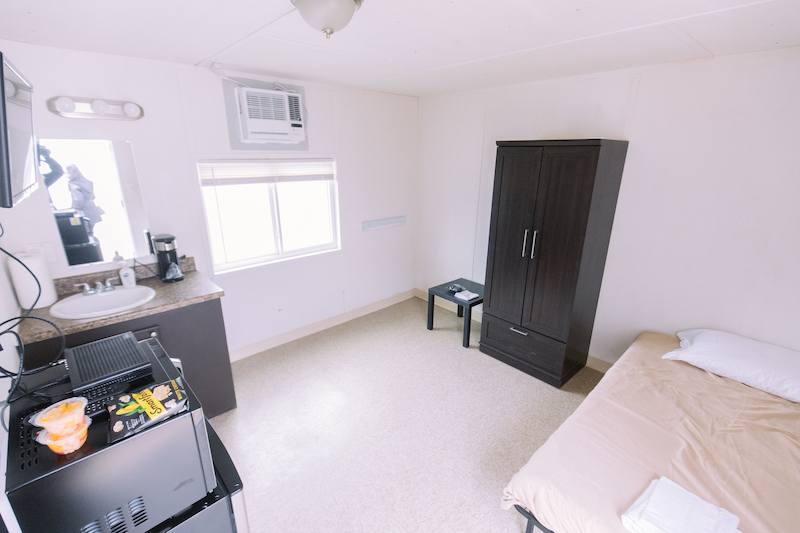
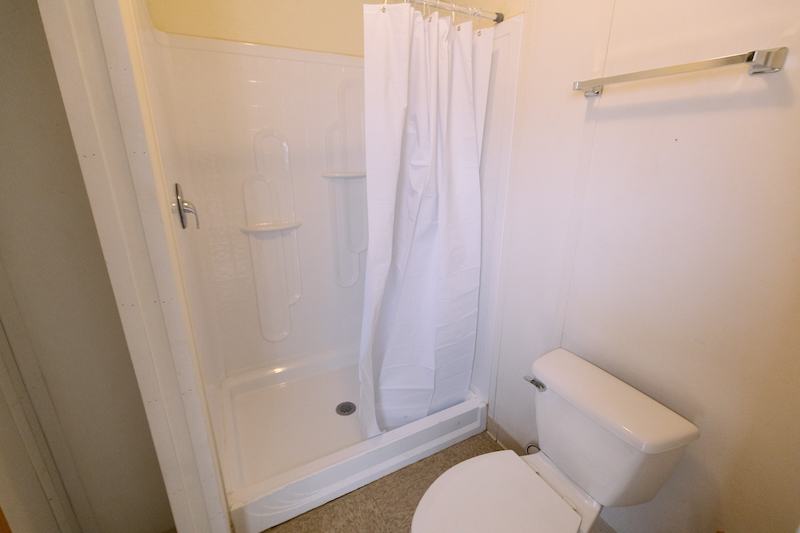
Food services and waste management are essential. The Centers also have to give patients something to do while they’re quarantined. “We thought it would be a good idea to give each patient an iPad, so they could watch movies and TV, but then you have to figure out how to recharge them and provide WiFi.”
Finding materials and components on short notice can also be challenging: Coppenrath notes that bathroom/shower trailers are “just not available anymore.”
On a positive note, Coppenrath says that DLR Group has been able to call upon “different levels of leadership” to lift roadblocks and keep things moving forward.
Related Stories
Coronavirus | Aug 27, 2020
8 must reads for the AEC industry today: August 27, 2020
Extended-stay hotels are the lodging sector's safest bet, and industrial real estate faces short-term decline.
Coronavirus | Aug 25, 2020
Co-living firm Common issues RFP for the future home office and work hub
Common, the U.S.’s largest co-living company, recently released an RFP for a “Remote Work Hub” to blend work and life from the ground up.
Coronavirus | Aug 25, 2020
Video: 5 building sectors to watch amid COVID-19
RCLCO's Brad Hunter reveals the winners and non-winners of the U.S. real estate market during the coronavirus pandemic.
Coronavirus | Aug 25, 2020
6 must reads for the AEC industry today: August 26, 2020
Big-box retailers’ profits surge, and rent payment tracker finds 90% of apartment households paying rent.
Coronavirus | Aug 25, 2020
7 must reads for the AEC industry today: August 25, 2020
Medical office buildings get a boost by demand and capital, and why the COVID-19 pandemic is increasing the need for telemedicine.
University Buildings | Aug 20, 2020
Student housing in the COVID-19 era
Student housing remains a vital part of the student and campus experience.
Coronavirus | Aug 17, 2020
Covid-19 and campus life: Where do we go from here?
Campus communities include international, intergenerational, and varied health-risk populations.
Coronavirus | Aug 10, 2020
Reimagining multifamily spaces in the COVID era
Multifamily developments pose unique challenges and opportunities.
Coronavirus | Aug 3, 2020
Exploring the airborne transmission of the coronavirus and strategies for mitigating risk
Health authorities say it’s important to understand the dangers of microdroplets. How might indoor ventilation need to change?


